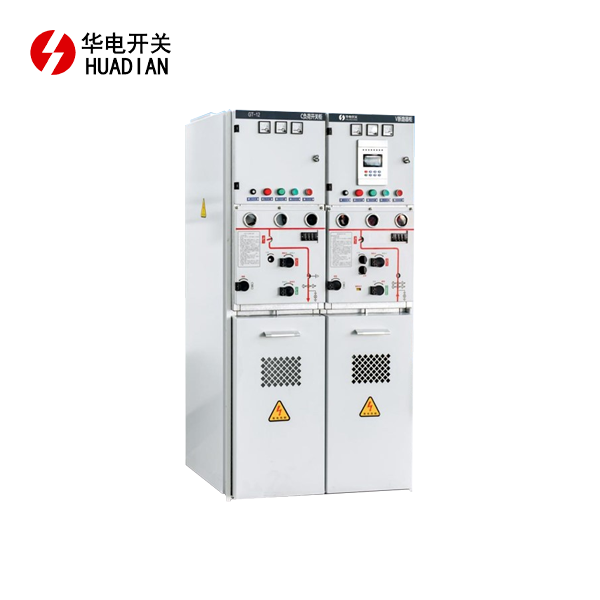Essential Components of High Voltage Switchgear
Circuit Breakers: The Heart of Switchgear
Circuit breakers are the cornerstone of high voltage switchgear systems. These devices are engineered to interrupt fault currents and protect electrical equipment from damage. Modern circuit breakers utilize various arc-quenching technologies, such as vacuum interrupters or SF6 gas, to extinguish the high-energy arcs that occur during current interruption. The rapid response time and high breaking capacity of circuit breakers make them indispensable in safeguarding power systems against short circuits and overloads.
Disconnectors: Ensuring Visible Isolation
Disconnectors, also known as isolators, provide a visible means of isolation in high voltage switchgear. While they lack the ability to break load currents, disconnectors are crucial for creating a physical and visible gap in the circuit. This feature is essential for maintenance personnel, offering a clear indication of circuit isolation. Disconnectors are typically operated when the circuit is de-energized, enhancing safety during maintenance procedures and system reconfigurations.
Instrument Transformers: Precision Measurement and Protection
Instrument transformers are vital components that enable accurate measurement and protection in high voltage switchgear. Current transformers (CTs) and voltage transformers (VTs) step down high currents and voltages to manageable levels for metering and relay protection systems. These devices ensure that control and protection equipment can operate effectively without being exposed to dangerous high voltage levels. The precision of instrument transformers is crucial for the overall performance and reliability of the switchgear system.
Advanced Functions of High Voltage Switchgear
Fault Detection and Clearing
One of the primary functions of high voltage switchgear is to detect and clear faults in the power system. Sophisticated protection relays constantly monitor the electrical parameters, such as current, voltage, and frequency. When abnormal conditions are detected, these relays trigger the circuit breakers to open, isolating the faulty section of the network. This rapid fault clearing capability minimizes damage to equipment and reduces the risk of widespread power outages, thereby enhancing the overall reliability of the electrical grid.
Load Management and Switching
High voltage switchgear plays a crucial role in load management and switching operations. It allows operators to connect or disconnect various loads and power sources to optimize power flow and maintain system stability. Advanced switchgear systems incorporate intelligent controls that enable remote operation and automation of switching sequences. This functionality is particularly valuable in smart grid applications, where dynamic load balancing and integration of renewable energy sources require flexible and responsive switchgear solutions.
System Coordination and Protection
Coordination between different switchgear units is essential for effective system protection. Modern high voltage switchgear incorporates advanced protection schemes that ensure selective tripping of circuit breakers. This coordination prevents unnecessary outages by isolating only the affected parts of the network. Additionally, switchgear systems often include backup protection features to provide redundancy in case of primary protection failure. The seamless integration of these protection mechanisms enhances the overall reliability and stability of power distribution networks.
Innovations in High Voltage Switchgear Technology
Digital Substation Integration
The advent of digital substations has revolutionized high voltage switchgear technology. Digital interfaces and communication protocols, such as IEC 61850, enable seamless integration of switchgear with substation automation systems. This integration facilitates real-time monitoring, diagnostics, and control of switchgear components. Digital substations enhance operational efficiency, reduce maintenance costs, and improve the overall reliability of power systems. The ability to collect and analyze vast amounts of data from switchgear devices opens up new possibilities for predictive maintenance and asset management strategies.
Eco-friendly Insulation Technologies
Environmental concerns have driven innovations in switchgear insulation technologies. While SF6 gas has been widely used for its excellent insulating properties, its high global warming potential has led to the development of alternative solutions. Vacuum circuit breakers have gained popularity in medium voltage applications, offering a clean and maintenance-free alternative. For high voltage applications, researchers are exploring eco-friendly gases and solid insulation materials that can match or exceed the performance of SF6 while minimizing environmental impact. These advancements are paving the way for more sustainable switchgear solutions in the future.
Compact and Modular Designs
The trend towards compact and modular switchgear designs is reshaping the industry. Gas-insulated switchgear (GIS) technology has enabled significant reductions in substation footprints, making it ideal for urban installations where space is at a premium. Modular designs offer flexibility in configuration and ease of expansion, allowing utilities to adapt their infrastructure to changing power distribution needs. These compact solutions not only save space but also reduce installation time and costs, making them increasingly attractive for both new installations and retrofit projects.
Conclusion
High voltage switchgear remains a critical component in modern power systems, combining robust protection mechanisms with advanced control capabilities. As the electrical grid evolves to accommodate renewable energy sources and smart grid technologies, the role of switchgear continues to expand. Innovations in digital integration, eco-friendly insulation, and modular designs are driving the industry forward, promising enhanced performance, reliability, and sustainability. Understanding the components and functions of high voltage switchgear is essential for professionals involved in power system design, operation, and maintenance, ensuring the continued safe and efficient distribution of electrical energy.
Contact Us
For more information about our high-quality high voltage switchgear products and solutions, please contact us at austinyang@hdswitchgear.com/rexwang@hdswitchgear.com/pannie@hdswitchgear.com. Our team of experts is ready to assist you in finding the perfect switchgear solution for your specific needs.





